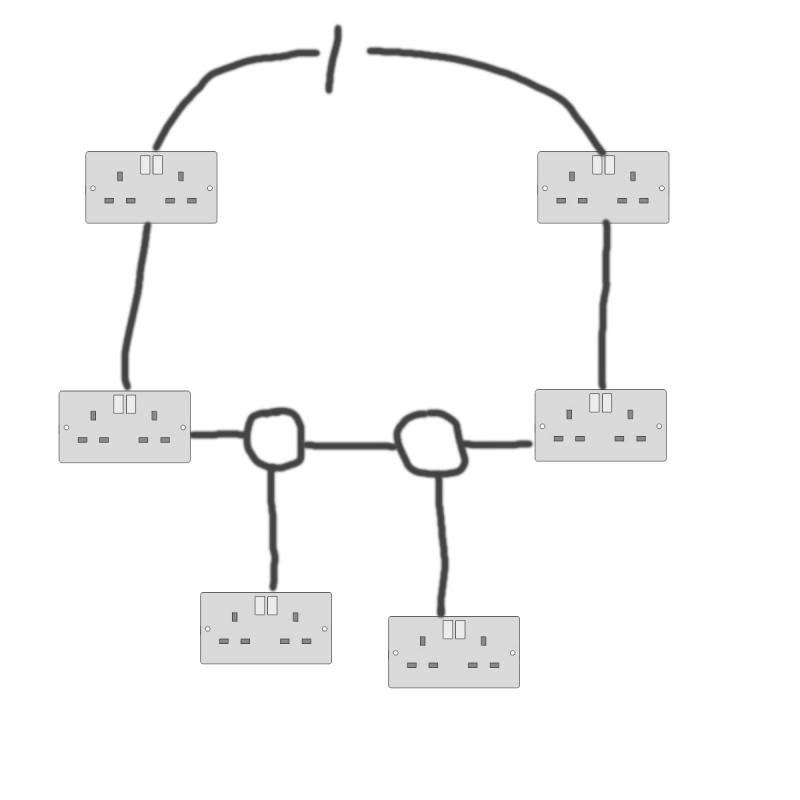Hi there, having pulled up the floorboards in an upstairs bedroom i have found that there are two spurs coming from between 2 sockets on our ring main. One serving the hall downstairs and another an additional socket in the room.
I know that you can't take a spur off a spur from a socket. But i was wondering if there is anything in the regulations not allowing this double spurring method between sockets?
I know that you can't take a spur off a spur from a socket. But i was wondering if there is anything in the regulations not allowing this double spurring method between sockets?


